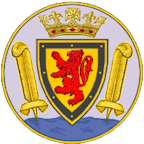History 1600 to 1700
At the beginning of the 17th century Saltash comprised
between 80 and 100 households
. Such
was the demand for space along the busy waterside that the area of muddy
foreshore to the north of Ashtorre Rock was reclaimed and a new quay, Sand
Quay, created to alleviate some of the pressure on the old quay. Sand Quay
was initially used mainly for the unloading of barges carrying sea-sand to
dress the arable land, and later on for ship and boat building.
In 1640 Edward Hyde became MP for Saltash. He later went into exile with the future Charles II and was the monarch's chief minister after the Restoration. His daughter married the Duke of York, later James II, and her two children were to become Queens Mary II and Anne.
Around this time three more large country houses were built in the rural area west of the town: Burell House, Ince Castle (actually a fortified manor house), and Wivelscombe Manor.
Due to its strategic position, Saltash played a major role from first to last during the English Civil War. Cornwall as a whole was staunchly Royalist, and one of the last areas to fall to the Roundheads. (The letter of thanks to the Royalists of Cornwall, written by Charles I in 1643, may still be seen in St Stephens Church.) Whoever held Saltash could effectively control the whole of south-east Cornwall, as all provisions and reinforcements relied on the ferry, and Royalist Saltash was constantly under attack from its Parliamentarian neighbour Plymouth. Defensive earthworks were built outside the town gate, which stood at the top of Fore Street, and batteries were constructed at the southern end of the waterfront and at Wearde Quay. (The remains of the Wearde Quay battery can still be seen today.) The town changed hands eight times between 1642 and 1646, and the street fighting and maritime bombardments caused a great deal of damage. The Royalists of Saltash were finally defeated in 1646 when Ince Castle, the last Royalist position in the area, fell to the Parliamentarian forces.
It is believed that Saltash sustained more damage than any other Cornish town during this period, and many of its buildings were destroyed. Losses, of course, were not just material: the population of Saltash and St Stephens stood at 1,137 in 1641, but had fallen to 900 after the war.
Once peace had been declared, the rebuilding of the town began. However, despite efforts to reinvigorate the local economy, Plymouth began to overshadow Saltash during this period. In 1669 Count Magalotti described Saltash as "a small town on the right bank of the Tamar where formerly flourished the same commerce which is now transferred to Plymouth". Four years later, Richard Blome commented that Saltash had become "of late much decayed to what it was; yet its Inhabitants gain well by traffick, but principally by Mault, and good Beer".
Other ancient institutions were changing, too. Some of the lands belonging to the Manor of Trematon had been sold to William Braddon and Charles Boscawen in the 1650s. Trematon Castle, neglected for some time as well as damaged during the war, had become ruinous and was used as a courthouse and prison. Also, the Corporation increasingly took control over St Nicholas's Chapel, designating it 'the Corporation Chapel' and appointing its chaplains.
In 1671 Charles II visited Plymouth and sailed up the Hamoaze as far as Saltash. The monarch expressed his admiration of the charms of the "Saltash River", but history does not record what he may have thought of the town which had suffered so in his royal father's service.
In the last decade of the 17th century the town was given an opportunity to challenge Plymouth's ascendancy when William III’s surveyors proposed Saltash for the site of the royal dockyards. However, the proposal was rejected by the town, who were concerned about disturbing the lucrative oyster beds, and so the yards were built in Plymouth instead.
page updated 2025-03-21
